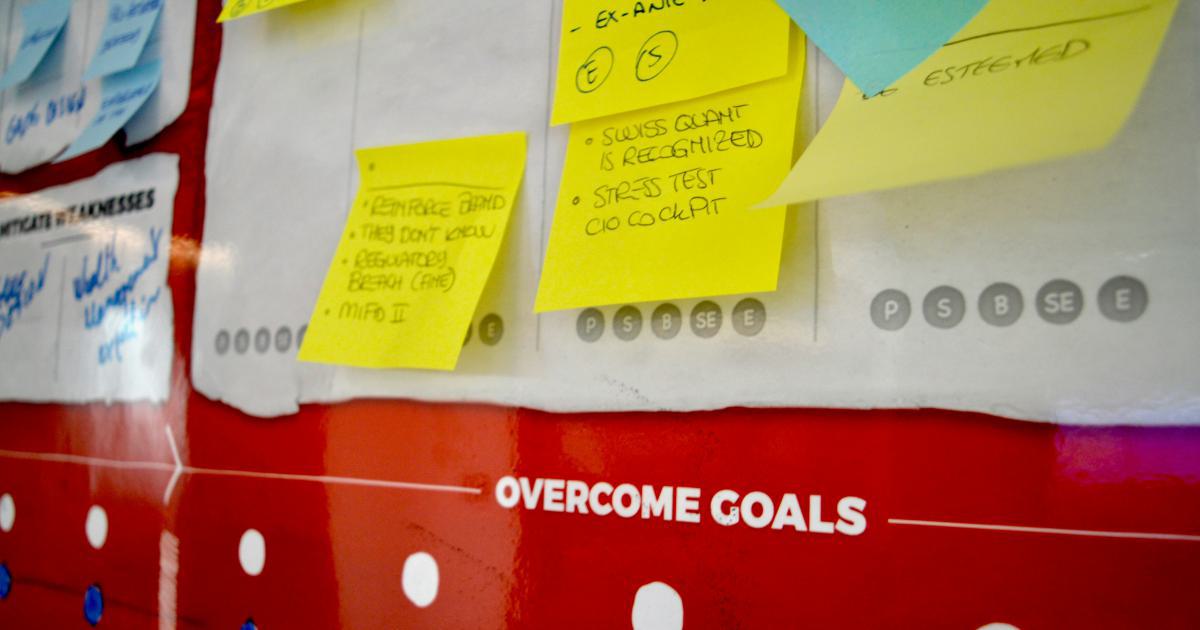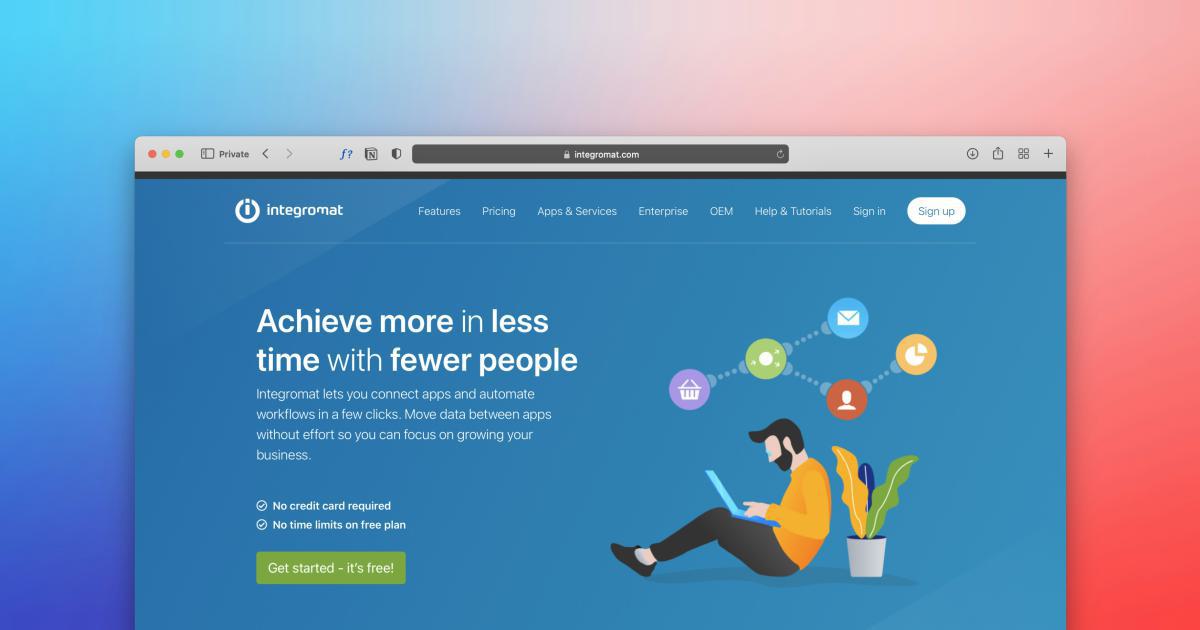Futureproof Digital Footprints: Setting Long-Term Goals


The Importance of Long-Term Digital Goals
In today's digital landscape, it's easy to get caught up in the constant churn of social media, email, and online activities. However, to truly futureproof your digital presence, it's crucial to take a step back and establish long-term goals. These goals will not only help you navigate the ever-evolving digital world but also ensure that your online identity and activities align with your personal and professional aspirations.

One of the primary reasons for setting long-term digital goals is to maintain control over your online reputation. In an age where a single online misstep can have lasting consequences, it's essential to proactively shape the narrative around your digital footprint. By defining your long-term objectives, you can make strategic choices about the content you share, the platforms you engage with, and the overall image you project to the world.
Aligning Digital Presence with Life Goals
Futureproofing your digital footprint is not just about managing your online reputation; it's also about ensuring that your digital activities support your broader life goals. Whether you're aiming to advance your career, build a personal brand, or create a lasting legacy, your digital presence should serve as a powerful tool to help you achieve these objectives.
By taking the time to articulate your long-term goals, you can then work backward to develop a digital strategy that enables you to reach those milestones. This might involve refining your social media profiles, establishing a professional website, or curating the content you share to showcase your expertise and interests.

Evaluating Your Current Digital Footprint
Before you can start setting long-term digital goals, it's essential to take an honest look at your current online presence. This evaluation will help you identify areas for improvement and provide a foundation for your future planning.
Auditing Your Online Profiles
Begin by conducting a comprehensive audit of your existing online profiles, including social media accounts, professional networking sites, and any personal websites or blogs. Consider the following questions as you review each platform:
- Is the information accurate and up-to-date?
- Does the content and tone align with your desired personal or professional brand?
- Are there any posts, comments, or interactions that could be perceived negatively?
- Are you actively engaged and participating on the platform, or has it become a neglected profile?

Analyzing Your Digital Footprint
Once you've assessed your individual profiles, take a step back and consider your overall digital footprint. Look for patterns, themes, and potential inconsistencies across your various online presences. This holistic view will give you a better understanding of how you're currently perceived in the digital space.
Some key areas to analyze include:
- The types of content you share (e.g., personal, professional, educational)
- The tone and language you use in your online interactions
- The visual elements, such as profile photos and cover images
- The level of engagement and interaction with your digital communities
- Any notable gaps or missing information that could be filled

Identifying Strengths and Weaknesses
After evaluating your current digital footprint, take the time to identify both your strengths and weaknesses. Recognize the areas where you're already excelling, such as consistently maintaining a professional and engaging presence on a particular platform. Likewise, pinpoint the areas that could use improvement, such as neglected profiles or content that doesn't align with your desired brand.
This assessment will help you establish a solid foundation for setting your long-term digital goals, as you'll be able to build upon your existing strengths while addressing any existing weaknesses.
Defining Long-Term Digital Goals
With a comprehensive understanding of your current digital footprint, you can now begin the process of setting long-term goals. These goals should be specific, measurable, and aligned with your broader personal and professional aspirations.
Aligning Digital Goals with Life Objectives
When defining your long-term digital goals, it's crucial to ensure they complement and support your overall life objectives. Consider the following questions:
- What are your primary career or business goals?
- Do you have any personal development or lifestyle objectives you want to achieve?
- How do you envision your digital presence contributing to the realization of these goals?
By clearly articulating the connection between your digital goals and your life objectives, you can create a cohesive strategy that maximizes the impact of your online activities.

Establishing Specific, Measurable Goals
Once you've established the overarching alignment between your digital and life goals, it's time to define specific, measurable objectives. These goals should be SMART (Specific, Measurable, Achievable, Relevant, and Time-bound) to ensure they're actionable and measurable.
Some examples of long-term digital goals include:
- Increasing your LinkedIn connections by 500 within the next 12 months to expand your professional network.
- Growing your Instagram following to 10,000 highly engaged followers in the next 2 years to establish a strong personal brand.
- Launching a personal website showcasing your portfolio and expertise in the next 6 months to position yourself as an industry thought leader.
- Generating 500 email subscribers for your blog within the next 18 months to build a loyal audience.

Prioritizing and Sequencing Goals
With your long-term digital goals defined, it's essential to prioritize and sequence them based on their importance and interdependencies. Some goals may be foundational, while others may serve as stepping stones towards more ambitious objectives.
Prioritize your goals by considering factors such as:
- The potential impact on your broader life and career objectives
- The level of effort and resources required to achieve each goal
- The timeline and dependencies between different goals
By carefully prioritizing and sequencing your long-term digital goals, you can create a roadmap that ensures you make steady progress and stay focused on your most critical objectives.

Developing a Comprehensive Digital Strategy
With your long-term digital goals in place, it's time to develop a comprehensive strategy to achieve them. This strategy should encompass various aspects of your online presence, from content creation to platform management and personal branding.
Content Creation and Curation
One of the cornerstones of your digital strategy should be a content creation and curation plan. This plan should outline the types of content you'll produce, the frequency of your posts, and the platforms you'll use to share this content.
When developing your content strategy, consider the following elements:
- Aligning content with your long-term digital goals and target audience
- Establishing a consistent brand voice and visual identity across all platforms
- Curating and sharing relevant, high-quality content from trusted sources
- Repurposing and optimizing your content for maximum reach and engagement

Platform Management and Engagement
In addition to your content strategy, your digital plan should also address the management and engagement aspects of your online presence. This includes:
- Consistently maintaining and updating your profiles on key platforms
- Actively engaging with your digital communities through likes, comments, and shares
- Monitoring your online reputation and responding promptly to any mentions or inquiries
- Experimenting with new platforms or features that align with your long-term goals
By taking a proactive and strategic approach to platform management, you can ensure that your digital footprint remains strong and aligned with your objectives.

Personal Branding and Reputation Management
A crucial component of your digital strategy should focus on personal branding and reputation management. This involves crafting a coherent, compelling, and consistent image of yourself across all your online activities.
Key elements of personal branding and reputation management include:
- Developing a unique and memorable personal brand identity
- Consistently aligning your online content, interactions, and visual elements with your brand
- Monitoring your online reputation and taking proactive steps to address any negative perceptions
- Leveraging your digital presence to showcase your expertise, achievements, and unique value proposition

Implementing and Adapting Your Digital Strategy
Once you've developed your comprehensive digital strategy, it's time to put it into action. This implementation phase will involve executing your content plan, actively engaging with your online communities, and continuously monitoring and adjusting your approach as needed.
Executing Your Content Plan
Begin by implementing your content creation and curation plan. This may involve drafting and scheduling social media posts, publishing blog articles, or updating your professional profiles. Ensure that your content is high-quality, consistent, and aligned with your long-term digital goals.
As you execute your content plan, pay close attention to the performance and engagement metrics for each piece of content. Use these insights to refine your approach and identify the types of content that resonate most with your target audience.

Actively Engaging with Your Audience
In addition to content creation, prioritize active engagement with your online communities. This may involve responding to comments, participating in relevant discussions, and reaching out to connect with key individuals or influencers in your industry.
Consistent engagement not only helps you build stronger relationships with your audience but also demonstrates your commitment to being an active and valuable member of your digital communities.

Monitoring and Adapting Your Strategy
As you implement your digital strategy, continuously monitor your progress and performance. Regularly review your key metrics, such as follower growth, website traffic, and engagement rates, to identify areas of success and opportunities for improvement.
Be prepared to adapt your strategy as needed, based on changing trends, platform updates, or shifts in your target audience's preferences. Remain flexible and open to experimenting with new tactics or platforms that may better serve your long-term digital goals.

Maintaining Momentum and Measuring Success
Achieving your long-term digital goals is an ongoing process that requires consistent effort and dedication. To maintain momentum and measure the success of your efforts, consider the following strategies:
Establishing Periodic Check-ins
Set aside dedicated time, such as quarterly or biannual check-ins, to review your progress and make any necessary adjustments to your digital strategy. During these check-ins, evaluate your key performance indicators, assess the effectiveness of your tactics, and identify areas for improvement.
These periodic check-ins will help you stay on track, address any challenges or roadblocks, and ensure that your digital efforts continue to align with your broader life and career objectives.

Celebrating Milestones and Incremental Successes
While it's important to maintain a long-term perspective, it's also crucial to celebrate your successes along the way. Take the time to recognize and acknowledge the milestones you achieve, whether it's hitting a follower count goal or securing a new client through your online presence.
Celebrating these incremental wins will not only boost your morale and motivation but also help you stay engaged and committed to your long-term digital goals.

Continuously Evolving Your Digital Footprint
The digital landscape is constantly evolving, and your long-term digital strategy must be prepared to adapt and evolve as well. Stay informed about industry trends, platform updates, and emerging best practices to ensure that your online presence remains relevant and effective.
Be open to exploring new tools, platforms, or techniques that may help you achieve your goals more efficiently or effectively. Continuously refine and optimize your digital strategy to keep pace with the ever-changing digital landscape.

By implementing these strategies, you can maintain the momentum and measure the success of your long-term digital goals, ensuring that your online presence continues to support your personal and professional aspirations.